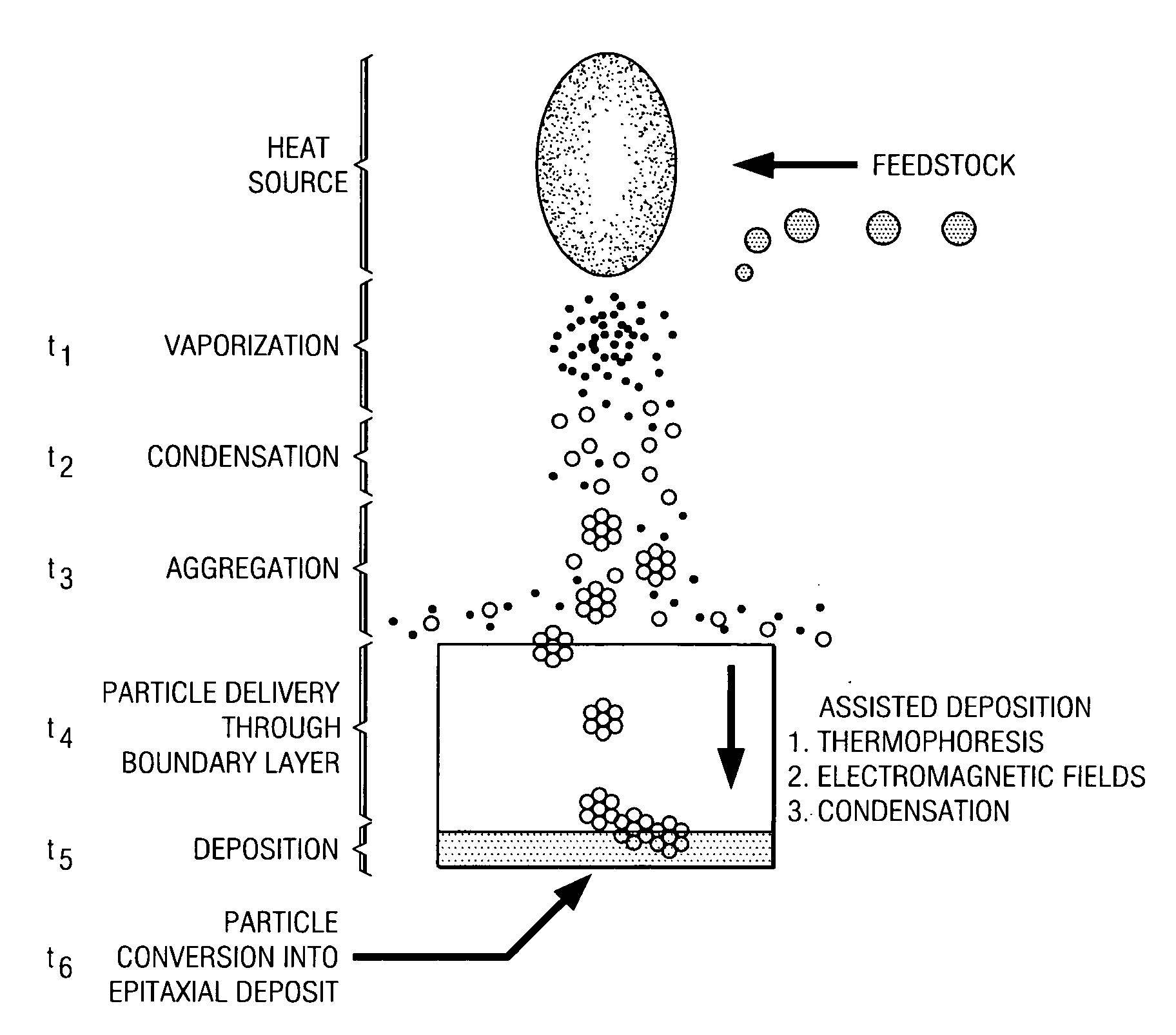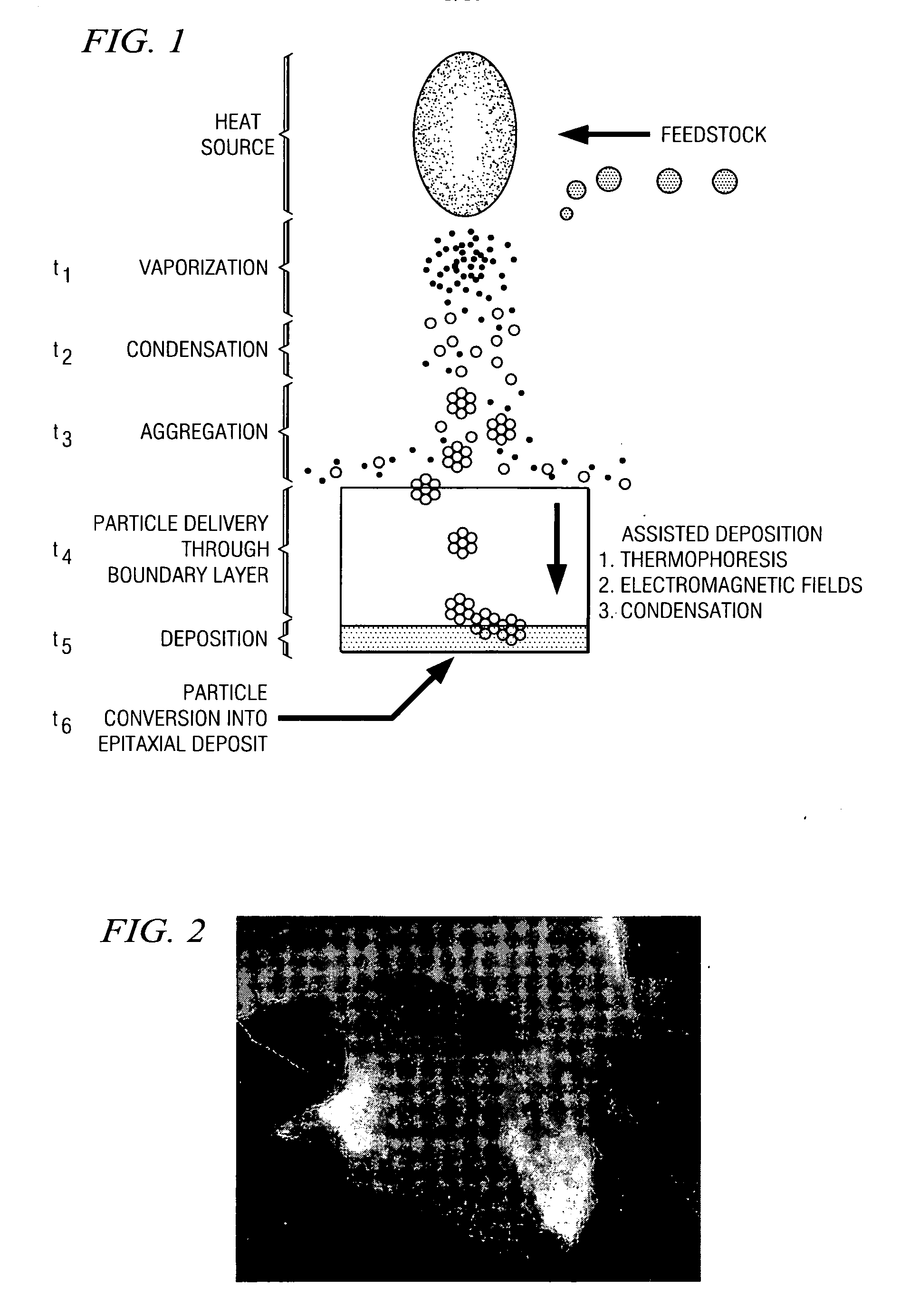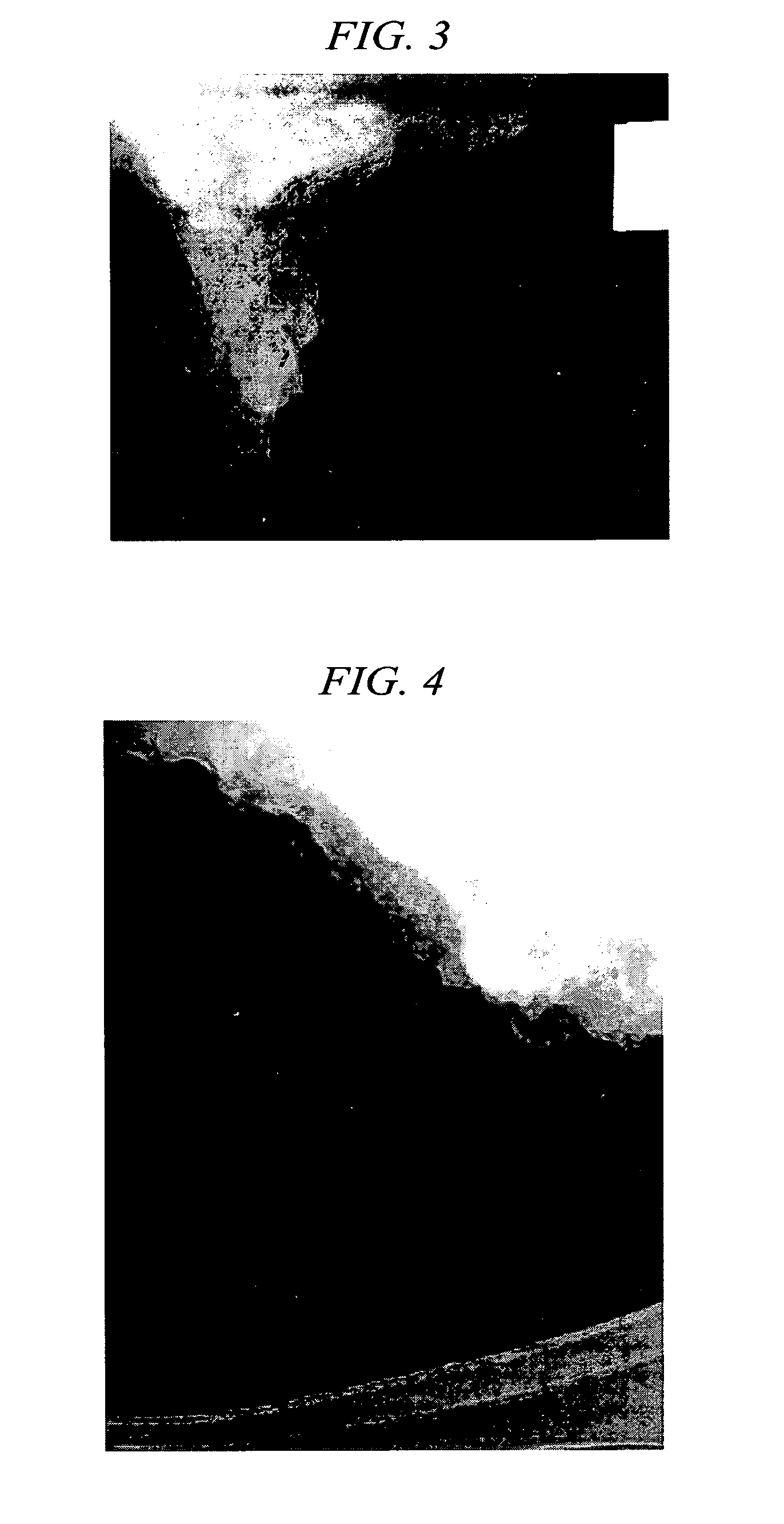Condensed phase conversion and growth of nanorods and other materials instead of from vapor
a nanorod and condensed phase technology, applied in the field of materials science and engineering, can solve the problems of limiting the capability and application of swcnts, swcnts have not reached their full structural application potential, and can only be realized, and achieve the effect of low cos
- Summary
- Abstract
- Description
- Claims
- Application Information
AI Technical Summary
Benefits of technology
Problems solved by technology
Method used
Image
Examples
example 1
[0138] In this example, the synthesis of single-wall carbon nanotubes by Nd:YAG laser vaporization of a graphite / (Ni, Co) target was investigated by laser-induced luminescence imaging and spectroscopy of Co atoms, C2 and C3 molecules, and clusters at 1000° C. in flowing 500 Torr Ar. These first laser induced emission images under typical synthesis conditions show that the plume of vaporized material is segregated and confined within a vortex ring which maintains a approximately 1 cm3 volume for several seconds. Using time-resolved spectroscopy and spectroscopic imaging, the time for conversion of atomic and molecular species to clusters was measured for both carbon (200 μs) and cobalt (2 ms). This rapid conversion of carbon to nanoparticles, combined with transmission electron microscopy analysis of the collected deposits, indicate that nanotube growth occurs over several seconds in a plume of mixed nanoparticles. By adjusting the time spent by the plume within the high-temperature ...
example 2
[0158] In this example, the key spatial and temporal scales for single-wall carbon nanotube (SWNT) synthesis by laser vaporization at high temperatures are investigated with laser-induced luminescence imaging and spectroscopy. Again using the setup depicted in FIG. 6, graphite / (Ni.Co) targets are ablated under typical synthesis conditions with a Nd:YAG laser at 1000° C. in a 2-in. quartz tube reactor in flowing 500 Torr Ar. The plume of ejected material is followed for several seconds after ablation using combined imaging and spectroscopy of Co atoms, C2 and C3 molecules, and clusters. The ablation plume expands in stages during the first 200 μs after ablation and displays a self-focusing behavior. Interaction of the plume with the background gas forms a vortex ring which segregates and confines the vaporized material within a approximately 1 cm3 volume for several seconds. Using time-resolved spectroscopy and spectroscopic imaging, the time for conversion of atomic and molecular sp...
PUM
| Property | Measurement | Unit |
|---|---|---|
| diameter | aaaaa | aaaaa |
| diameter | aaaaa | aaaaa |
| diameter | aaaaa | aaaaa |
Abstract
Description
Claims
Application Information
 Login to View More
Login to View More - R&D
- Intellectual Property
- Life Sciences
- Materials
- Tech Scout
- Unparalleled Data Quality
- Higher Quality Content
- 60% Fewer Hallucinations
Browse by: Latest US Patents, China's latest patents, Technical Efficacy Thesaurus, Application Domain, Technology Topic, Popular Technical Reports.
© 2025 PatSnap. All rights reserved.Legal|Privacy policy|Modern Slavery Act Transparency Statement|Sitemap|About US| Contact US: help@patsnap.com



